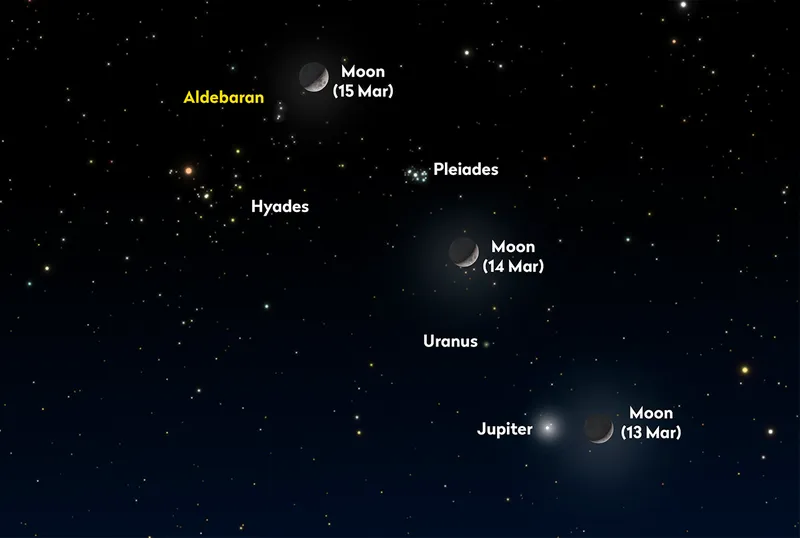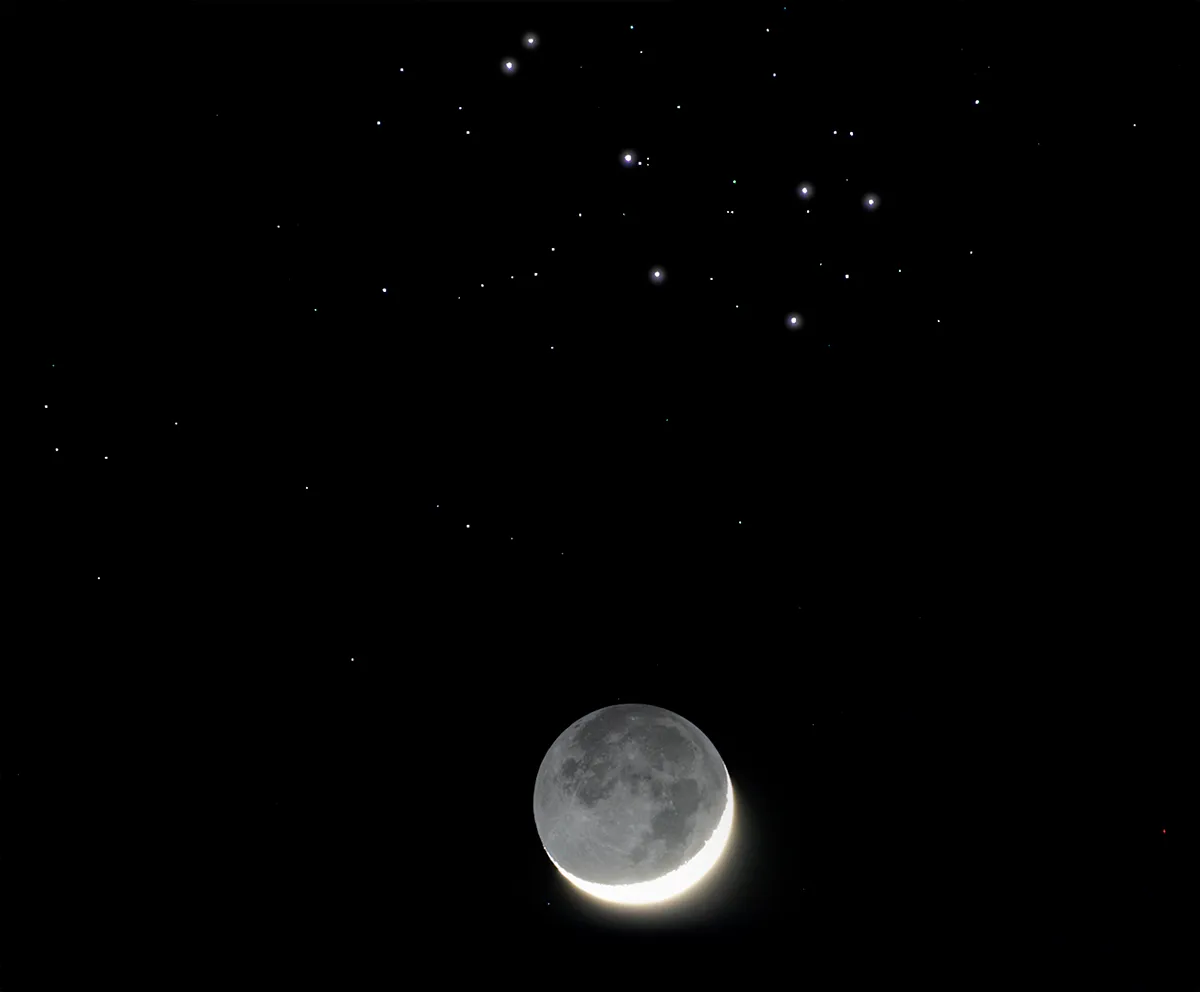There’s a lovely encounter between the waxing crescent Moon and Jupiter tomorrow evening, 13 March.
This bright meeting will be a great target if you have a smartphone with a camera sensitive enough to record astronomical objects.
Find out more about how to do this in our guides on how to photograph the night sky with your smartphone and how to photograph the Moon with your smartphone.

One key thing to check is whether your phone's camera has a 'Pro' mode that enables you to adjust the exposure time, white balance, ISO setting etc., as this will enable you to play around with the settings to get the right shot.
A smartphone tripod will also be handy here.
The Moon will have an illuminated phase of 16% and will appear 3.8° from Jupiter as true darkness arrives.
The gap continues to close until just before they set at around 23:00 UT, when they will be just 2.8° apart.

The next evening, 14 March, the Moon will have moved further east to sit between the dim planet Uranus and the Pleiades open cluster, M45.
The Moon’s phase will have increased to 26% on this date, slim enough to allow the stars of the Pleiades to be easily seen above and left of the Moon’s position as seen from the UK.
Again, if you had success taking a photo of the Moon and Jupiter together using a smartphone, have a go to see whether you can record the Moon and the Pleiades together.
With a wide enough view, you should also be able to capture mag. +0.8 Aldebaran (Alpha (α) Tauri) together with the V-shaped Hyades open cluster.
As a challenge, see whether you can record Uranus as well.
Did you manage to photograph the Moon, planets and star cluster? Don't forget to send us your images

